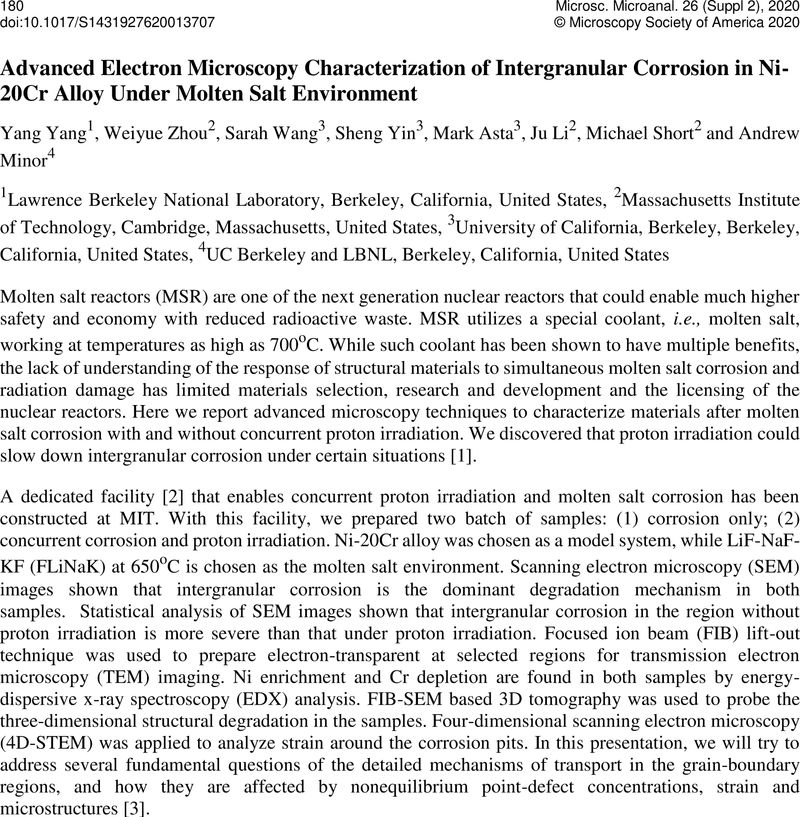No CrossRef data available.
Article contents
Advanced Electron Microscopy Characterization of Intergranular Corrosion in Ni-20Cr Alloy Under Molten Salt Environment
Published online by Cambridge University Press: 30 July 2020
Abstract
An abstract is not available for this content so a preview has been provided. As you have access to this content, a full PDF is available via the ‘Save PDF’ action button.

- Type
- Advanced Characterization of Nuclear Fuels and Materials
- Information
- Copyright
- Copyright © Microscopy Society of America 2020
References
Zhou, W., Yang, Y., Zheng, G., Woller, K., Stahle, P., Minor, A., Short, M.P., Proton Irradiation-Decelerated Intergranular Corrosion of Ni-Cr Alloys in Molten Salt, Arxiv. 1911.11798 (2019). https://arxiv.org/abs/1911.11798v1.Google Scholar
Zhou, W., Woller, K.B., (Tony) Zheng, G., Stahle, P.W., Short, M.P., A simultaneous corrosion/irradiation facility for testing molten salt-facing materials, Nucl. Instruments Methods Phys. Res. Sect. B Beam Interact. with Mater. Atoms. 440 (2019) 54–59. doi:10.1016/j.nimb.2018.11.024.CrossRefGoogle Scholar
The authors acknowledge support of FUTURE (Fundamental Understanding of Transport Under Reactor Extremes), an Energy Frontier Research Center funded by the U.S. Department of Energy, Office of Science, Basic Energy Sciences. Y.Y. was supported by the Director, Office of Science, Office of Basic Energy Sciences, Materials Sciences and Engineering Division, of the U.S. Department of Energy under Contract No. DE-AC02-05-CH11231 within the Mechanical Behavior of Materials (KC 13) program at the Lawrence Berkeley National Laboratory. The authors acknowledge support by the Molecular Foundry at Lawrence Berkeley National Laboratory, which is supported by the U.S. Department of Energy under Contract No. DE-AC02-05CH11231. The authors gratefully acknowledge funding from the Transatomic Power Corporation under Grant No. 023875-001, and the US Department of Energy Nuclear Energy University Program (NEUP) under Grant No. 327075-875J.Google Scholar





